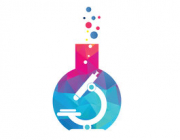Chaima MOUFFOUK, soumia MOUFFOUK, Kafia OULMI, Sara M, Hamada H.
Mouffouk, C., Mouffouk, S., Oulmi, K., Mouffouk, S., & Haba, H. (2020). In vitro photoprotective, hemostatic, anti-inflammatory and antioxidant activities of the species Linaria scariosa Desf. , 130, 383-388. South African Journal of Botany [Internet]. 2020;130 (2020) :383-388.
Publisher's VersionAbstract
Recently, plant-derived extracts gained considerable attention as skincare agents, because of their capacity to exert a broad spectrum of biological activities, including their power to absorb ultraviolet radiation, their antioxidant, anti-inflammatory and hemostatic properties. In this context, the study focused on the evaluation of in vitro pharmacological activities of the methanolic extract obtained from the species Linaria scariosa. The plant is used by the local populations of Aures region (Algeria) for wound healing and its traditional applications will be validated. The quantification of the total phenolic and flavonoid content was performed spectrophotometrically using Folin-Ciocalteu and trichloroaluminum methods. The antioxidant activity was determined by four different assays including ferric reducing antioxidant power, total antioxidant capacity, ferric thiocyanate assay and the antioxidant activity by potentiometric method. Furthemore, the in vitro anti-inflammatory activity was assessed by albumin denaturation method, the photoprotective effect was evaluated by the measurment of sun protection factor (SPF) and the hemostatic activity was carried out by the determination of plasma re-calcification time (PRT). Result of the phytochemical screening from the methanolic extract was found to contain several secondary metabolites known for their biological properties. Moderate contents of polyphenols and flavonoids were estimated. The MeOH extract possessed moderate antioxidant activity for various tested assays and had the ability to inhibit thermally-induced protein denaturation in a dose-dependent manner with a percentage of 40.98% at 500 μg/ml. Moreover, this plant extract significantly shortened the clotting time compared to the control group and had a higher capacity to absorb UV radiations with a sun protection factor estimated at 38.46 ± 0.22. The methanolic extract from L. scariosa could be used in cosmetic formulations and as a skin care agent
Samia D, Chaima MOUFFOUK, SOUIMIA MOUFFOUK, Hamada H.
In vitro anti-inflammatory, antioxidant and antibacterial activities of the Algerian species Micropus bombycinus. . Advances in Traditional Medicine [Internet]. 2020 :1-9.
Publisher's VersionAbstractThe present study reports the in vitro pharmacological properties of the methanolic extract obtained from the species Micropus bombycinus Lag. The quantification of total phenolic content was performed using the Folin-Ciocalteu method. The antioxidant activity was evaluated by four different assays. Moreover, the in vitro anti-inflammatory activity was assessed using the albumin denaturation method and the antibacterial activity was estimated by agar disk diffusion assay against ten bacterial strains. The Micropus bombycinus methanolic extract contains several classes of secondary metabolites known for their biological properties. A high content of polyphenols was estimated (115.32 ± 0.47 μg GAE/ mg of plant extract). The MeOH extract possessed strong antioxidant activities in various assays that subsequently correlated with its phenolic content. It had also the ability to inhibit thermally-induced protein denaturation with a percentage of 27.51% at the concentration of 400 μg/mL. Furthermore, this extract showed antibacterial activity against all the tested strains with zones of inhibition ranging from 9 to 28 mm. It can be concluded that Micropus bombycinus could be an interesting source for potential bioactive compounds as inhibitors of pathogenic bacteria, and it helps to cure chronic inflammatory (Rheumatoid arthritis) and oxidative stress-related diseases.
soumia MOUFFOUK, Chaima MOUFFOUK, Chawki B, Hamada H.
In vitro Cytotoxic Effect, Hemolytic, and Antioxidant Activities of the Algerian Species Nonea vesicaria Rchb. Current Bioactive Compounds [Internet]. 2020;16 (18).
Publisher's VersionAbstract
Objective: The aim of this study is the estimation of total phenolic and flavonoid contents and the evaluation of cytotoxic, hemolytic and antioxidant activities of the methanolic extract obtained from the species Nonea vesicaria (L.) Rchb.
Methods: The total phenolic and flavonoid contents were quantified by Folin-Ciocalteu and trichloroaluminum methods, respectively. The cytotoxic effect was tested by Brine shrimp lethality assay and the hemolytic activity was assessed by spectrophotometric test on human erythrocytes. Moreover, the antioxidant activity was determined by seven different techniques.
Results: The phytochemical screening revealed the presence of many classes of secondary metabolites, a moderate level of polyphenols, and a low content of flavonoids. The methanolic extract showed a significant cytotoxic effect with a value of LC50 at 35.7±0.5 μg/mL and induced hemolysis in a dosedependent manner with a value of EC50 at 175.6±0.08 μg/mL. The results of antioxidant activities indicated an important effect on nonpolar systems especially in ferric thiocyanate test and β-carotene bleaching inhibition assay.
Conclusion: The methanolic extract of N. vesicaria could constitute an important source of antioxidant and cytotoxic compounds but prudent use is recommended in order to reduce the adverse effects related to the possible hemolysis.
Keywords: Nonea vesicaria, extract, cytotoxic effect, antioxidant, phytochemical screening, hemolytic activity.
